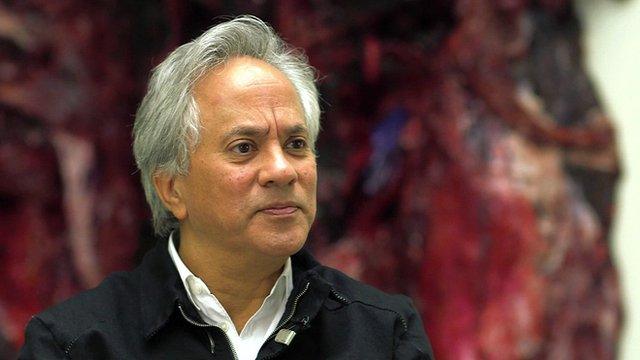Anish Kapoor 'vagina' sculpture vandalised
- Published

The tubular-shape installation was spray-painted inside and out
Vandals have sprayed-painted a controversial Anish Kapoor sculpture on display in the gardens of France's Palace of Versailles.
The 60-metre steel tube was called "dirty" and "gross" by critics, after Kapoor was quoted as saying it signified "the vagina of the queen who took power".
The vandalism was discovered on Wednesday, and the work is currently being cleaned.
Kapoor called the incident "a tragedy".
Speaking to Le Figaro, he said the vandals represented "a small fraction of people who have been told that any creative act is an endangerment of a sacred past, revered to the extreme."
The installation, called Dirty Corner, sits in the grounds outside the palace, the home of Marie Antoinette, the 18th Century queen of France.
He stressed to the newspaper he had never used the word "queen" to refer to the subject of the sculpture, and claimed he had been mis-quoted.
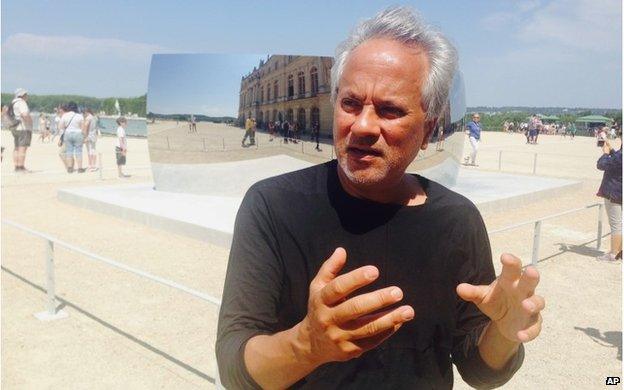
Kapoor said his work "has multiple interpretive possibilities"
Kapoor was originally quoted in a French interview saying the work signified "the vagina of the queen coming into power, external" - but later said the work was open to interpretation.
"Inevitably, one comes across the body, our bodies and a certain level of sexuality. But it is certainly not the only thing it is about," he said.
In a statement, the artist added: I am aware of the power of art and its ability to offend. Dirty Corner is in some ways itself an act of artistic violence.
"It attempts to lay bare the tidy surface of Le Notre's Versailles... It looks under the carpet of Le Notre's "Tapis Vert" and allows the uncomfortable, even the sexual.
Kapoor is a former Turner Prize-winner whose work has been shown around the world.
He is perhaps best known for the Orbital Tower at the heart of the Olympic Park in east London and for his Marsyas sculpture in the Turbine Hall of Tate Modern in London.
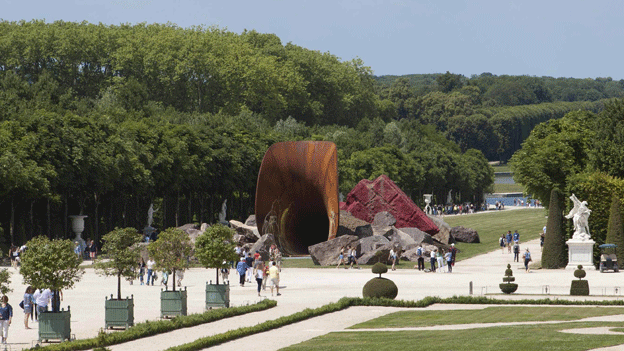
The sculpture sits in the grounds of the historic Palace of Versailles
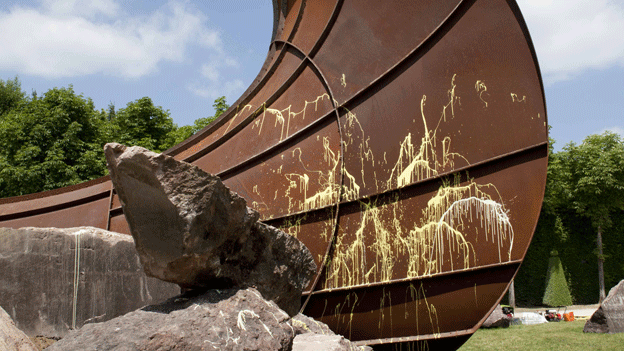
Kapoor called the vandalism "a tragedy"
- Published18 October 2014

- Published24 December 2014
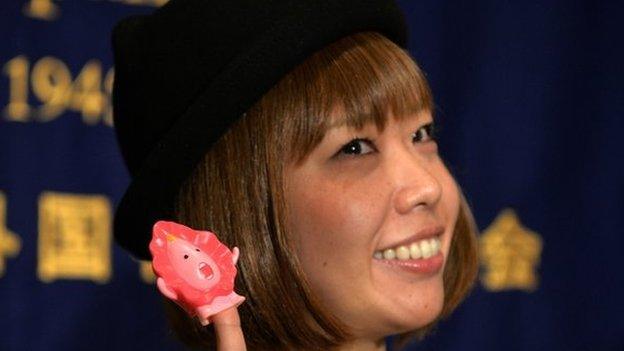
- Published9 April 2015
